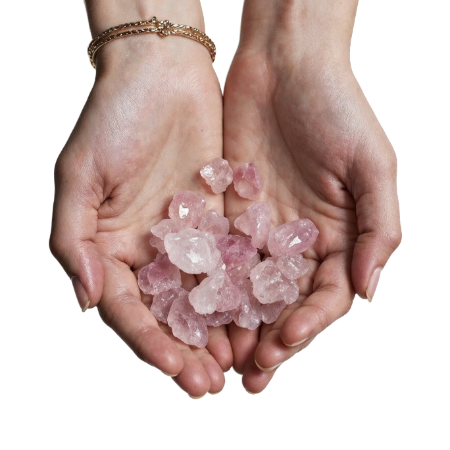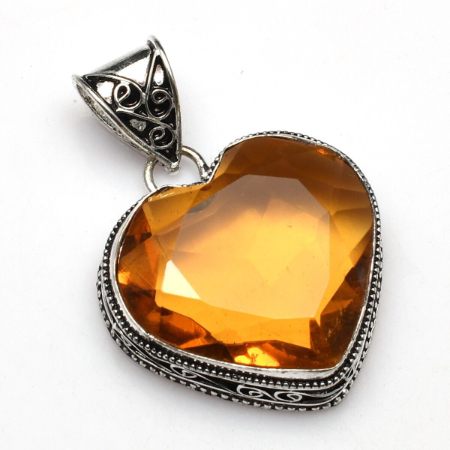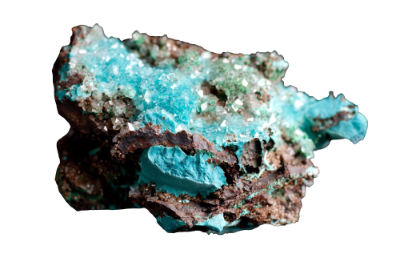
Rare and difficult to cut, anhydrite is seldom faceted. However, this material can be carved into beautiful objects. “Angelite,” a blue-gray variety, has become a popular choice for lapidary arts.
This translucent, blue-gray anhydrite variety known by the trade name “angelite” or “angeline” has become a popular gem material. Discovered in Peru, it was introduced to worldwide gem markets in the late 1980s. This material has been used for beads, spheres, and carvings. Of course, these trade names carry deliberate angelic connotations. The gem’s color may evoke sky blue or, perhaps, a “heavenly” blue.
Does Anhydrite Make a Good Jewelry Stone?
Anhydrite doesn’t occur in abundance. When exposed to water over time, it alters into the much more commonly found gypsum. Not surprisingly, facetable material is rarer still.
With excellent cleavage planes in three directions, anhydrites also prove challenging to cut and fragile for wear. Furthermore, with a hardness range of 3-3.5, they’re very susceptible to scratching, which further limits their use as jewelry stones. Avoid ring use and use protective settings whenever possible with this gem. Consider creating earrings, pendants, and bracelets, instead. Artisans have carved objects and cut cabochons from this material. Of course, carvings and decorative objects will hopefully face fewer risks than jewelry.

Other Anhydrite Varieties
Although angelite is the most well-known anhydrite variety, various types of anhydrites with lapidary uses or unusual appearances have also received trade names. (1)
- Bowel Stone
Anhydrite that occurs in folded, concretionary forms is known as bowel stone. This variety name also carries deliberate connotations. - Blue “Egyptian” Anhydrite
The Ancient Egyptians used white anhydrite as well as a distinctive blue-tinted variety to create beautiful objects. However, the ancient source of the blue material, which takes a good polish, has never been found. - Vulpinite
This white-gray, marble-like textured material from Volpino, Italy is used locally for cabs and as a decorative stone.
Identifying Characteristics
Because of the intersection of anhydrite’s cleavage planes at right angles, these gems may break apart and reveal cube-like (pseudo-cubic) forms. This appearance has led to another name for this gemstone: “cube spar.” Despite appearances, anhydrites have an orthorhombic crystal habit, not a cubic or isometric habit. (1)

How to Care for Anhydrites
Keep any anhydrites dry, especially if placed in storage. They will readily absorb moisture and, over time, turn wholly or partly into gypsum.
Don’t wipe dust off anhydrites. Since household dust consists mostly of silicon quartz, which is far harder (7) than anhydrites, you’ll scratch them. Pat them with a lint-free cloth, instead. (1)
Sources
(1) International Gem Society
(2) FreePik
In My Shop
Angelite and Agate Necklaces
These Angelite and Agate Necklaces are composed of 8mm Natural Green Angelite Gemstone, 8mm Natural Blue Dragon Agate, silver-plated round spacer beads and magnetic clasps.
2 in stock








